See What’s Growing at Massachusetts Farmers Markets
The most delicious season of the year gets under way with a brand-new market at the Boston Fish Pier, fresh event offerings, and more kinds of local bounty than ever.
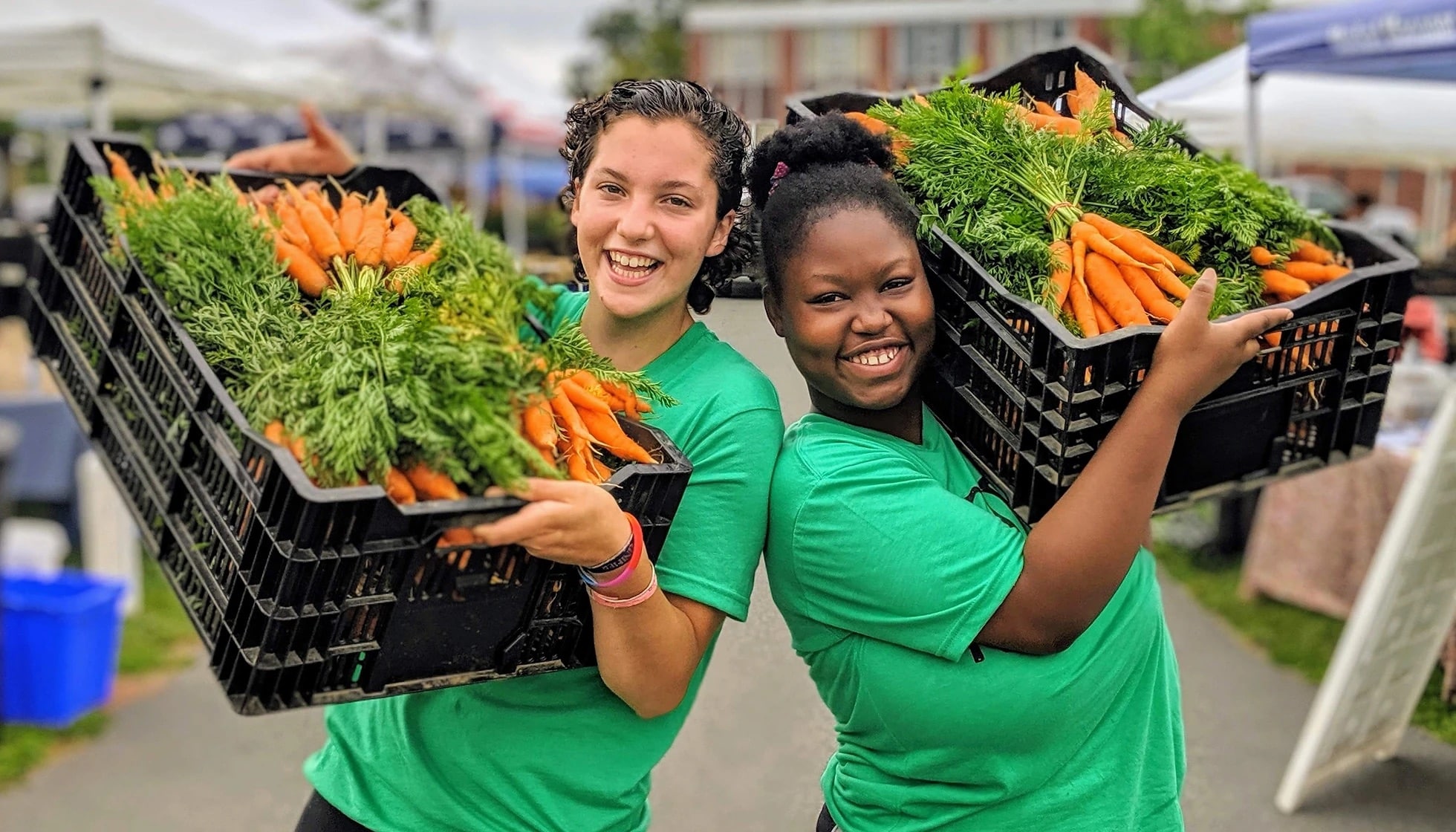
Coffee By Design | Portland, Maine
Photo Credit : Katherine KeenanSponsored by Mass Farmers Markets
If you want to discover the true flavor of Massachusetts, start by exploring its many farmers markets. From Boston to the Berkshires, you’ll find more than 200 of them, and their growing abundance speaks to the fact that these markets are more than just showcases of prime fruits and vegetables. Today’s Massachusetts farmers markets are a rich display of all things raised, harvested, or made locally—from baked goods to seafood, handcrafted gifts to holistic body care.
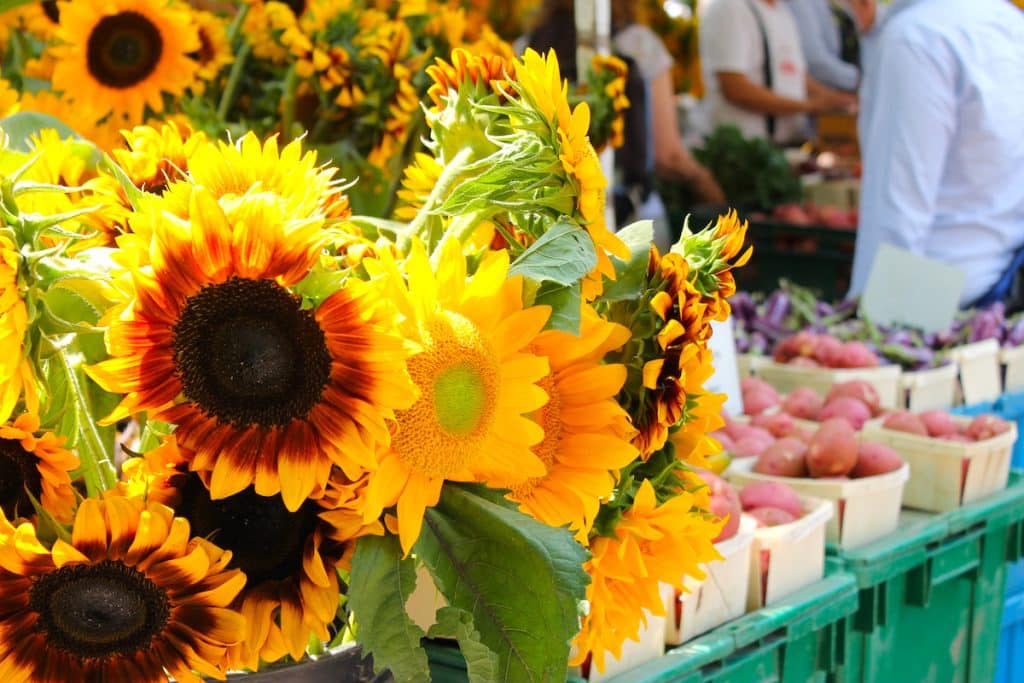
Photo Credit : Dale Fornoff/iStock
“We really push ourselves to think dynamically about how people shop and what they want,” says Becca Handford, lead market manager for the nonprofit Mass Farmers Markets (MFM), which oversees five Boston-area markets including the biggest and busiest, in Copley Square. “That means specialty items that you can’t really get at the supermarket, like certain kinds of mushrooms or culturally significant vegetables that may be featured in different kinds of Asian cooking. But we’re also having folks that have sheep and alpaca farms. It’s really about trying to find creative ways that folks can incorporate all different aspects of local agriculture into their lives.”
Making that happen is no easy task. In fact, the work to make the state’s farmers markets so vibrant is a year-round commitment, with some of the most important tasks coming shortly after the seasonal markets have closed in late fall. For Handford and her colleagues, December is devoted to a deep analysis of the past year: What worked? What needs improving? What new vendors and events can be added to next season’s rotation? No year, Handford says, is ever the same.
That’s especially true in 2024 with the opening of the new Fish & Farm Market at the historic Boston Fish Pier. A collaboration between MFM and the Massachusetts Port Authority (Massport), the seasonal market operates on Saturdays beginning June 22 and will feature up to 15 vendors selling a wide range of products: fish and other seafood, of course, but also things like small-batch-roasted coffee and all-natural honey.
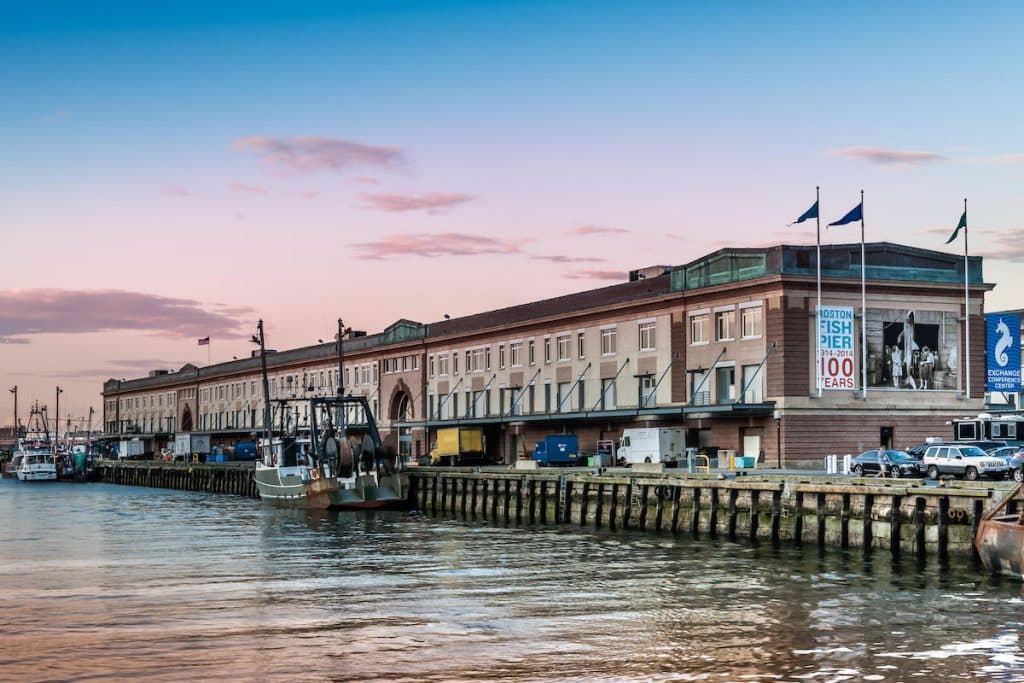
Photo Credit : Terry Mathews/Alamy Stock Photo
“Massport is excited to partner with Mass Farmers Markets this summer to open the weekly Fish & Farm Market at the Boston Fish Pier,” says Andrew Hargens, Massport’s chief development officer. “Aligned with our mission, a key goal of the market is to support and promote Boston’s seafood industry, while also offering a diverse mix of vendors and local food sources to residents, workers, and visitors in the area.”
For 2024, MFM has also placed a heavy emphasis on fostering diversity and inclusion. At the center of that effort is the launch of MFM’s first-ever BIPOC Incubator Initiative at its Central Square Farmers Market. Launched in partnership with the Cambridge Community Foundation, the program offers financial support to BIPOC farmers and food entrepreneurs who may not have the necessary resources to access the popular market.
In addition, MFM has worked to develop a number of fun, engaging events for this year, including a hot sauce competition (June 21) and a Fiber Fest (November 19), both at Copley Square, and a Fermentation Fest at the Davis Square Farmers Market (August 7).
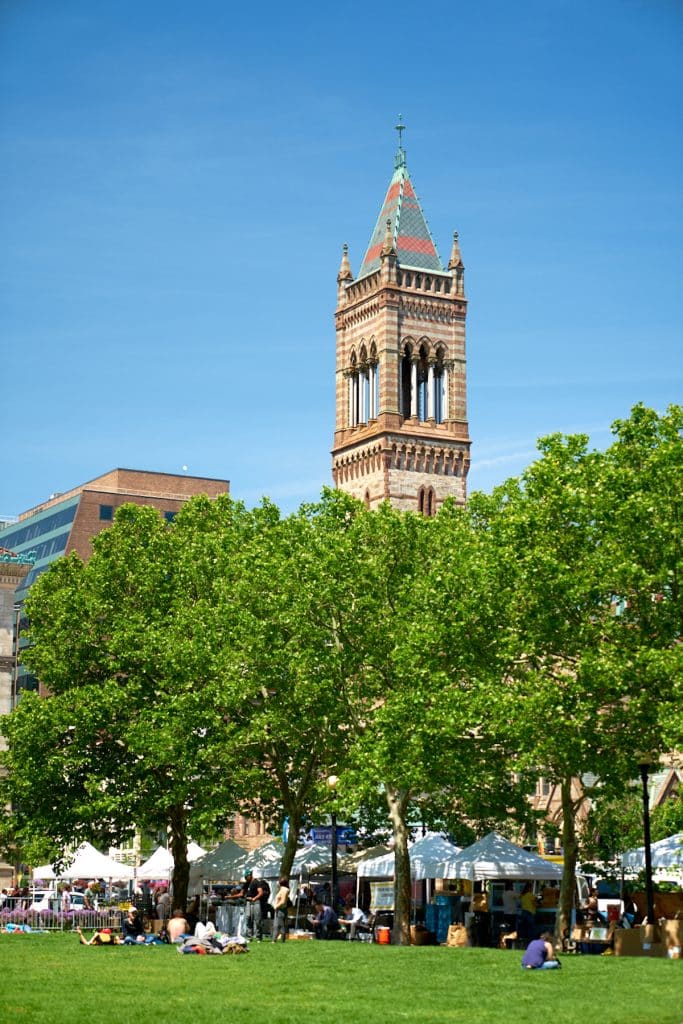
Photo Credit : Mark Fleming
Farmers markets’ role in fostering ties with the community is an important one—a fact that is not lost on farmer-owners like Liza Bemis of Concord’s Hutchins Farm, a regular presence at markets in Cambridge, Somerville, and Belmont.
“It offers a direct connection with your customers,” says Bemis, who co-manages the 40-acre organic farm that her father and her uncle founded more than 50 years ago. “And I think it builds trust. You’re able to directly explain to the customer what you have or the reasons why you may not have something else. They’re getting a better connection to nature and the natural world. Maybe they come back the next week and tell you what they cooked with your vegetables. It’s just a lovely experience.”
And, like the organizers of the markets themselves, vendors like Bemis have no off-season in preparing for that experience. At Hutchins Farm, the groundwork for each summer actually begins in December, with the ordering of seeds and meticulous planning for the following year. There’s the pruning of fruit trees and blueberry bushes in January. By midwinter, the farm’s greenhouses are up and running. Bemis says the farm plants up to 5,000 weekly lettuce seedlings alone just to keep up with the demand for greens throughout the summer.
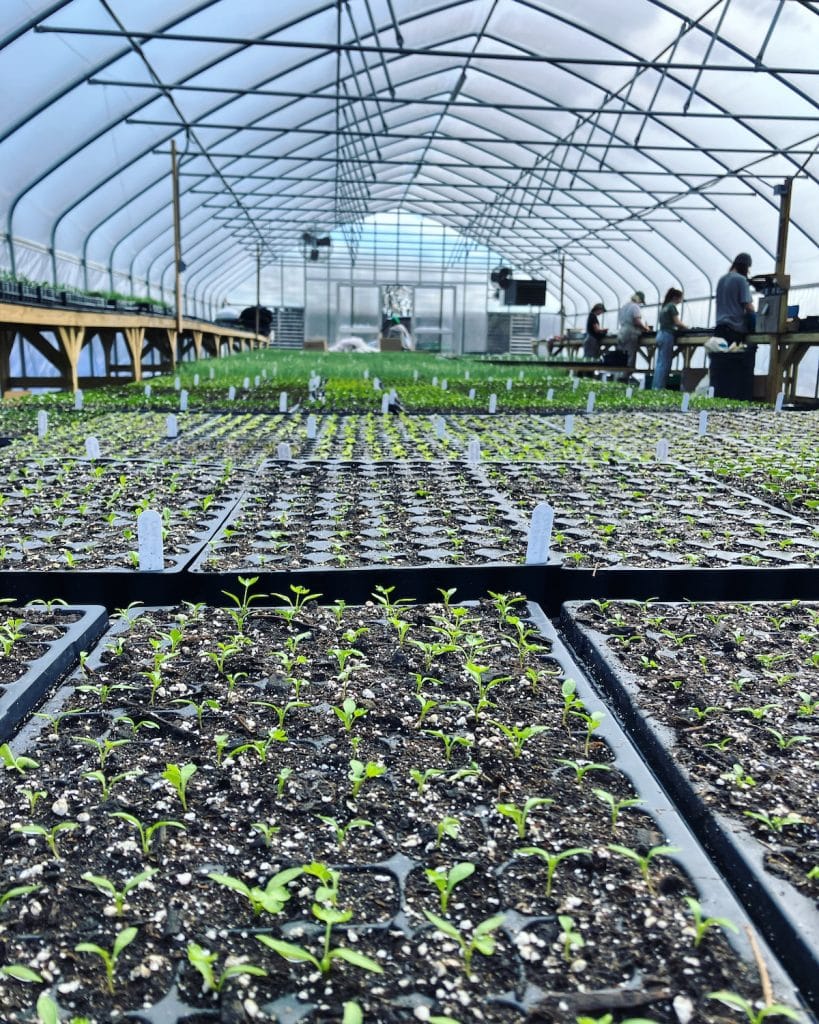
Photo Credit : Hutchins Farm
But in addition to offering customers a variety of traditional farmers market produce throughout the year—greens, tomatoes, corn, fruits—Bemis says her farm also delights in introducing new discoveries. Take, for instance, the watermelon radish. “It’s not something you typically see in a grocery store, but we’re finding people really like it,” she says. “It’s a mild radish with this bright pink inside. People open them up, and they’re just wowed at how beautiful they are.”
Likewise, something new is always blooming at the Pittsfield Farmers Market, a year-round market that features more than 20 different food vendors. It’s run by Roots Rising, a youth development program that introduces teens to farming and the local food culture. Many of those same apprentices are also central to the operations of the market itself, whose vendors include artists as well as makers of things like candles and clothing.
“The kids learn not just about growing food but how to have a job, show up on time, and work as a team,” Jessica Vecchia, co-founder of Roots Rising and its farmers market. “They get to develop these great skills that they can use in all different aspects of their lives.”
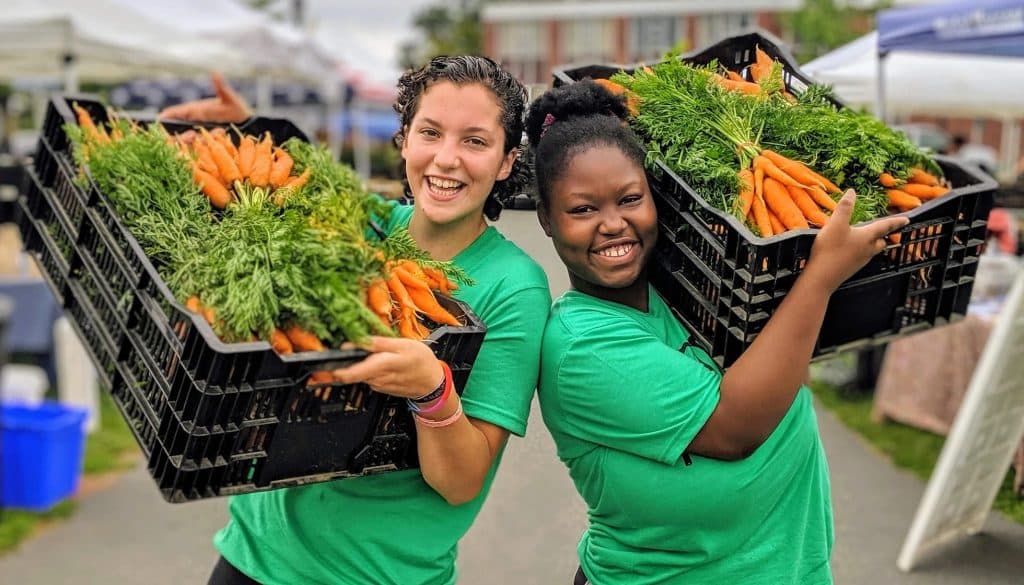
Photo Credit : Roots Rising
Now in its 12th season, the Pittsfield Farmers Market makes its home during the non-winter months in the First Street Common, a downtown park that reinforces the market’s strong sense of community. Around the green is a splash pad for kids, walking paths, and park benches where families can anchor themselves at for a picnic. Live music is often a part of the scene. In the winter, the market moves indoors to Zion Lutheran Church.
“When you come to a farmers market, the money you spend is going directly to the people you’re buying from,” says Vecchia. “But there’s also a big community benefit, too. People are less isolated. They’re outside. They’re meeting new people. They’re seeing art. It’s not just a place to shop. It’s a place to feel connected.”
And in Massachusetts, especially, it’s a chance to explore—and taste—all the bounty that the Bay State’s farms and farmers markets have to offer.







